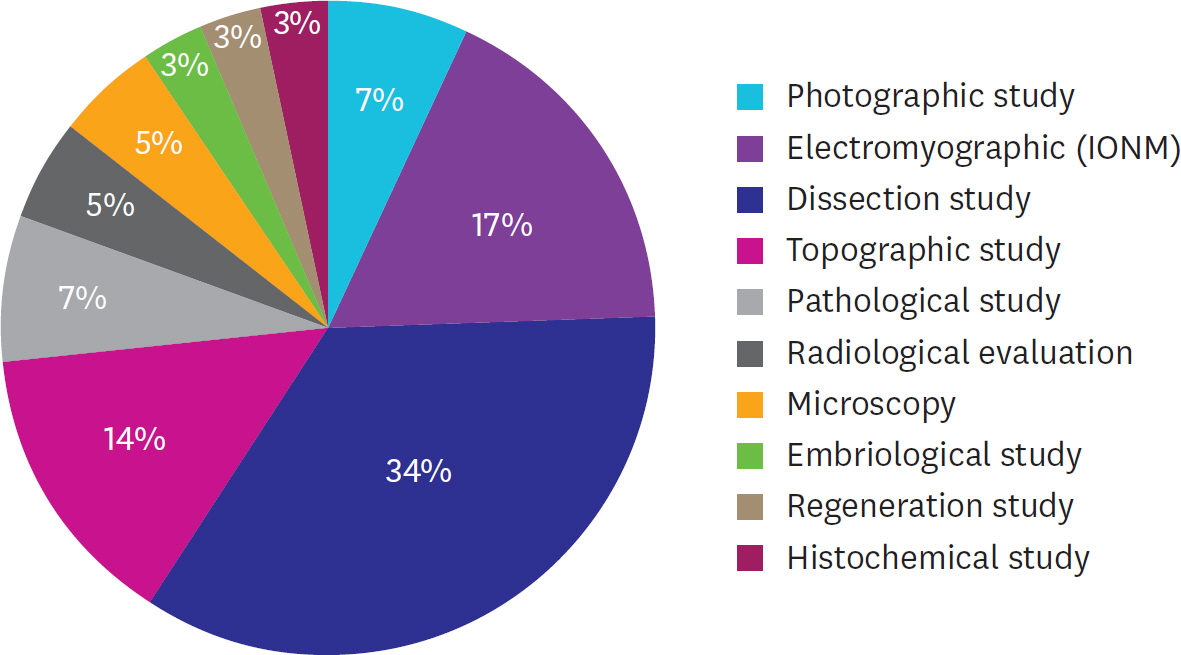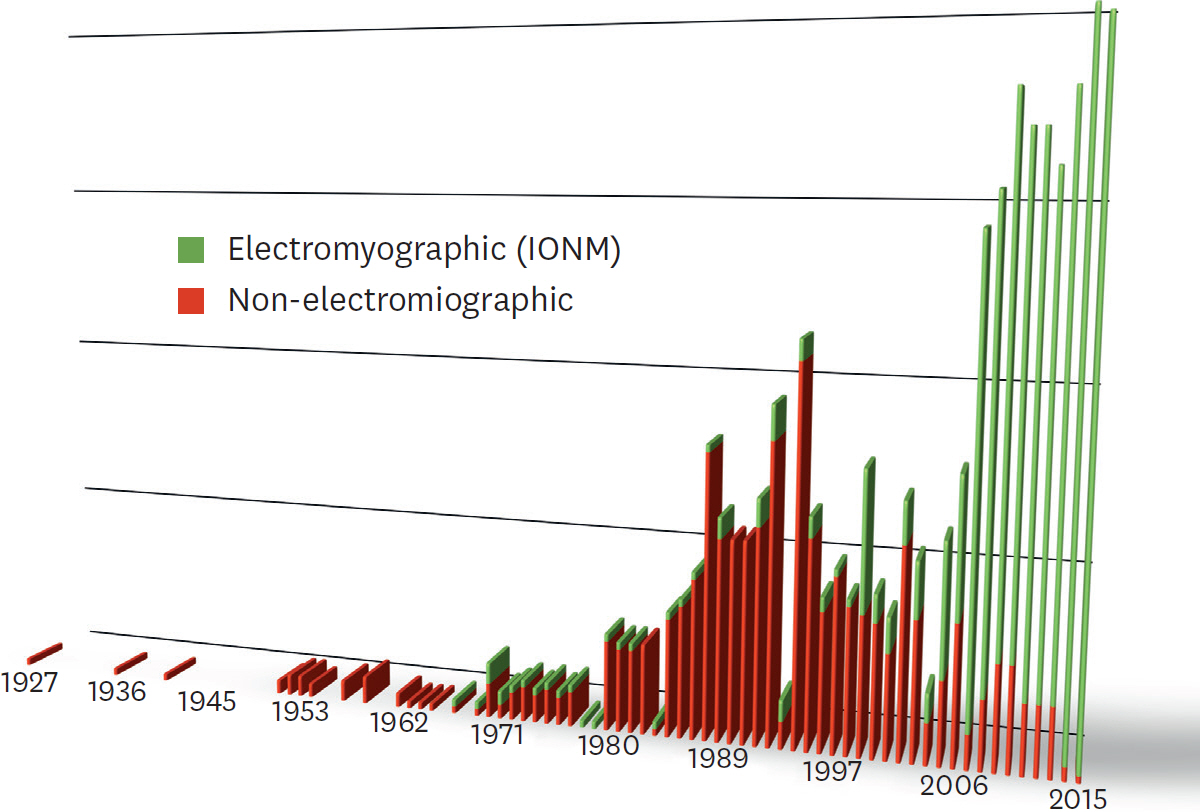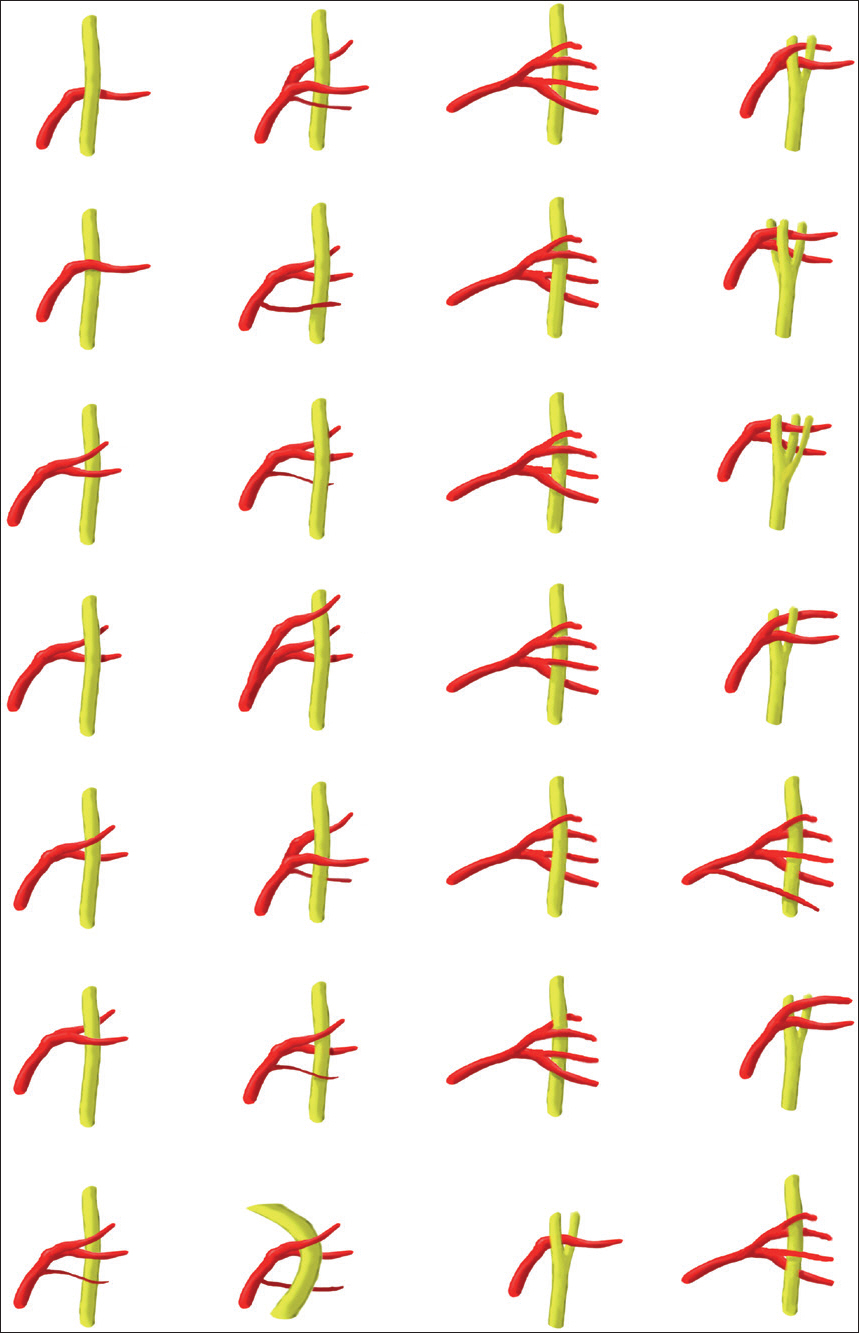J Endocr Surg.
2018 Mar;18(1):49-60. 10.16956/jes.2018.18.1.49.
Intraoperative Neural Monitoring in Thyroid Surgery: Role and Responsibility of Surgeon
- Affiliations
-
- 1KUMC Thyroid Center, Korea University Anam Hospital, Seoul, Korea.
- 2Department of Otolaryngology-Head and Neck Surgery, The Johns Hopkins University School of Medicine, Baltimore, MD, USA.
- 3Department of Surgery, Seoul Metropolitan Government-Seoul National University Boramae Medical Center, Seoul, Korea.
- 4Department of Endocrine Surgery, 3rd Chair of General Surgery, Jagiellonian University College of Medicine, Kraków, Poland.
- 5Division of Endocrine Surgery, Department of General Surgery, Ege University Hospital, Ä°zmir, Turkey.
- 6Department of Otolaryngology-Head and Neck Surgery, Kaohsiung Medical University, Kaohsiung, Taiwan.
- 7Department of Endocrine Surgery, Cleveland Clinic, Cleveland, OH, USA.
- 8Division of Thyroid Surgery, Jilin Provincial Key Laboratory of Surgical Translational Medicine, China-Japan Union Hospital of Jilin University, Changchun, China. thyroidjl@163.com
- 9Division of Endocrine and Minimally Invasive Surgery, Department of Human Pathology in Adulthood and Childhood “G. Barresiâ€, University Hospital G. Martino, University of Messina, Messina, Italy. gdionigi@unime.it
- KMID: 2414422
- DOI: http://doi.org/10.16956/jes.2018.18.1.49
Abstract
- Surgeons who introduce intraoperative neural monitoring (IONM) or a new IONM accessory, or related procedure in their practice should have completed relevant surgical training, possess operating privileges in the affected endocrine system, and be able to address anticipated complications. Surgeon responsibility in monitoring is dual component. First, technical component is using and setting up the IONM equipment correctly and understanding the inherent properties of the system to avoid an erroneous setup (e.g., no muscle relaxation, correct electrode placement, low impedance, etc.). Second, interpretive component is performing the monitoring able to distinguish between a true response versus an artifactual one. Organizations such as the International Neural Study Group and the Korean Intraoperative Neural Monitoring Society provide training courses for surgeon, as well as a means to certify levels of monitoring interpretative competence.
MeSH Terms
Figure
Reference
-
1.Haugen BR., Alexander EK., Bible KC., Doherty GM., Mandel SJ., Nikiforov YE, et al. 2015 American Thyroid Association Management Guidelines for adult patients with thyroid nodules and differentiated thyroid cancer: the American Thyroid Association Guidelines Task Force on thyroid nodules and differentiated thyroid cancer. Thyroid. 2016. 26:1–133.
Article2.Yi KH., Kim SY., Kim DH., Kim SW., Na DG., Lee YJ, et al. The Korean guideline for thyroid cancer screening. J Korean Med Assoc. 2015. 58:302–12.
Article3.Fei X., Yang D., Kong Z., Lou Z., Wu J. Thyroid cancer incidence in China between 2005 and 2009. Stoch Environ Res Risk Assess. 2014. 28:1075–82.
Article4.Sanabria A., Kowalski LP., Shah JP., Nixon IJ., Angelos P., Williams MD, et al. Growing incidence of thyroid carcinoma in recent years: factors underlying overdiagnosis. Head Neck, in press. 2017.
Article5.Statistisches Bundesamt (DE). Fallpauschalenbezogene Krankenhausstatistik (DRG-Statistik): Operationen und Prozeduren der Vollstationären Patientinnen und Patienten in Krankenhäusern-Ausführliche Darstellung. Wiesbaden: Statistisches Bundesamt;2012.6.Lamartina L., Durante C., Lucisano G., Grani G., Bellantone R., Lombardi CP, et al. Are evidence-based guidelines reflected in clinical practice? An analysis of prospectively collected data of the Italian thyroid cancer observatory. Thyroid. 2017. 27:1490–7.
Article7.Barczyń ski M., Konturek A., Hubalewska-Dydejczyk A., Gołkowski F., Nowak W. Ten-year follow-up of a randomized clinical trial of total thyroidectomy versus dunhill operation versus bilateral subtotal thyroidectomy for multinodular non-toxic goiter. World J Surg, in press. 2017.8.Borel F., Christou N., Marret O., Mathonnet M., Caillard C., Bannani S, et al. Long-term voice quality outcomes after total thyroidectomy: a prospective multicenter study. Surgery, in press. 2017.
Article9.Marin Arteaga A., Peloni G., Leuchter I., Bedat B., Karenovics W., Triponez F, et al. Modification of the surgical strategy for the dissection of the recurrent laryngeal nerve using continuous intraoperative nerve monitoring. World J Surg, in press. 2017.
Article10.Francis DO., Pearce EC., Ni S., Garrett CG., Penson DF. Epidemiology of vocal fold paralyses after total thyroidectomy for well-differentiated thyroid cancer in a medicare population. Otolaryngol Head Neck Surg. 2014. 150:548–57.
Article11.Dionigi G., Wu CW., Kim HY., Rausei S., Boni L., Chiang FY. Severity of recurrent laryngeal nerve injuries in thyroid surgery. World J Surg. 2016. 40:1373–81.
Article12.Dionigi G., Alesina PF., Barczynski M., Boni L., Chiang FY., Kim HY, et al. Recurrent laryngeal nerve injury in video-assisted thyroidectomy: lessons learned from neuromonitoring. Surg Endosc. 2012. 26:2601–8.
Article13.Cho I., Jo MG., Choi SW., Jang JY., Wang SG., Cha W. Some posterior branches of extralaryngeal recurrent laryngeal nerves have motor fibers. Laryngoscope. 2017. 127:2678–85.
Article14.Rajabian A., Walsh M., Quraishi NA. Berry's Ligament and the Inferior Thyroid Artery as reliable anatomical landmarks for the Recurrent Laryngeal Nerve (RLN): a fresh-cadaveric study of the cervical spine. The RLN relevant to spine. Spine J. 2017. 17:S33–9.
Article15.Henry BM., Vikse J., Graves MJ., Sanna S., Sanna B., Tomaszewska IM, et al. Extralaryngeal branching of the recurrent laryngeal nerve: a meta-analysis of 28,387 nerves. Langenbecks Arch Surg. 2016. 401:913–23.
Article16.Barczyń ski M., Konturek A., Cichoń S. Randomized clinical trial of visualization versus neuromonitoring of recurrent laryngeal nerves during thyroidectomy. Br J Surg. 2009. 96:240–6.17.Dionigi G., Boni L., Rovera F., Rausei S., Castelnuovo P., Dionigi R. Postoperative laryngoscopy in thyroid surgery: proper timing to detect recurrent laryngeal nerve injury. Langenbecks Arch Surg. 2010. 395:327–31.
Article18.Riddell V. Thyroidectomy: prevention of bilateral recurrent nerve palsy. Results of identification of the nerve over 23 consecutive years (1946–69) with a description of an additional safety measure. Br J Surg. 1970. 57:1–11.
Article19.Randolph GW., Dralle H., Abdullah H., Barczynski M., Bellantone R., Brauckhoff M, et al. Electrophysiologic recurrent laryngeal nerve monitoring during thyroid and parathyroid surgery: international standards guideline statement. Laryngoscope. 2011. 121(Suppl 1):S1–16.
Article20.Schneider R., Sekulla C., Machens A., Lorenz K., Thanh PN., Dralle H. Dynamics of loss and recovery of the nerve monitoring signal during thyroidectomy predict early postoperative vocal fold function. Head Neck. 2016. 38(Suppl 1):E1144–51.
Article21.Schneider R., Sekulla C., Machens A., Lorenz K., Nguyen Thanh P., Dralle H. Postoperative vocal fold palsy in patients undergoing thyroid surgery with continuous or intermittent nerve monitoring. Br J Surg. 2015. 102:1380–7.
Article22.Dralle H., Lorenz K. Intraoperative neuromonitoring of thyroid gland operations: surgical standards and aspects of expert assessment. Chirurg. 2010. 81:612–9.23.Dralle H., Sekulla C., Lorenz K., Brauckhoff M. Machens AGerman IONM Study Group. Intraoperative monitoring of the recurrent laryngeal nerve in thyroid surgery. World J Surg. 2008. 32:1358–66.
Article24.Melin M., Schwarz K., Pearson MD., Lammers BJ., Goretzki PE. Postoperative vocal cord dysfunction despite normal intraoperative neuromonitoring: an unexpected complication with the risk of bilateral palsy. World J Surg. 2014. 38:2597–602.
Article
- Full Text Links
- Actions
-
Cited
- CITED
-
- Close
- Share
- Similar articles
-
- Technical Instructions for Continuous Intraoperative Neural Monitoring in Thyroid Surgery
- Surveillance in the Cerebral Aneurysm Surgery
- The Consistency of Intraoperative Neural Monitoring in Thyroid Surgery
- Future Directions of Neural Monitoring in Thyroid Surgery
- Efficacy of Intraoperative Neural Monitoring (IONM) in Thyroid Surgery: the Learning Curve






